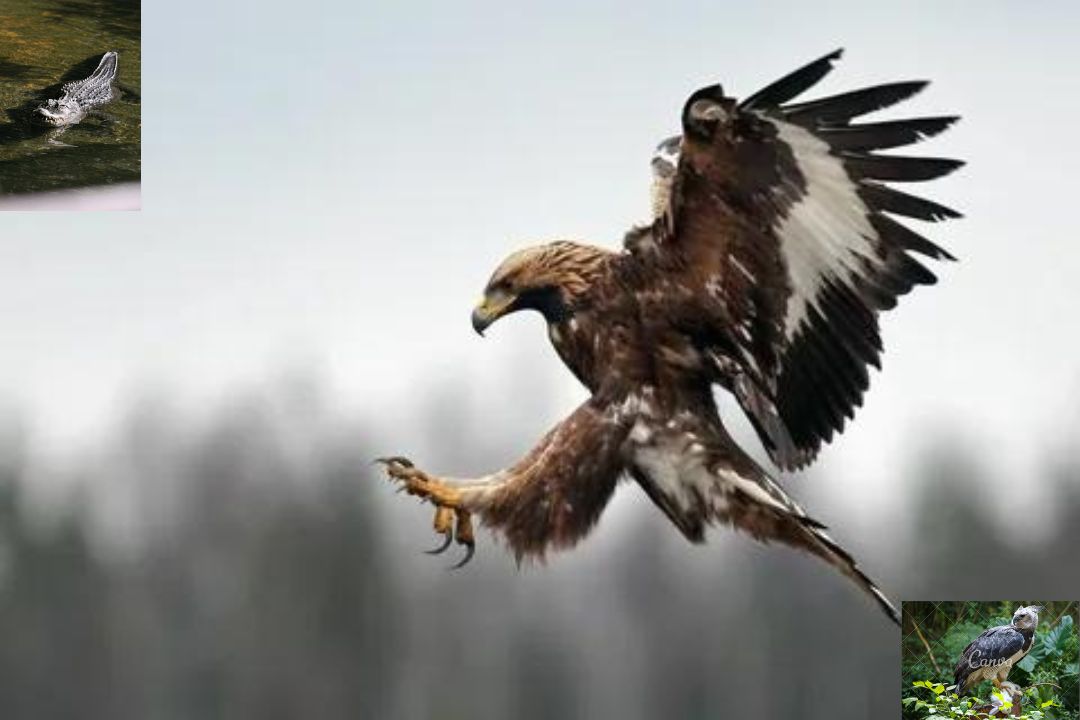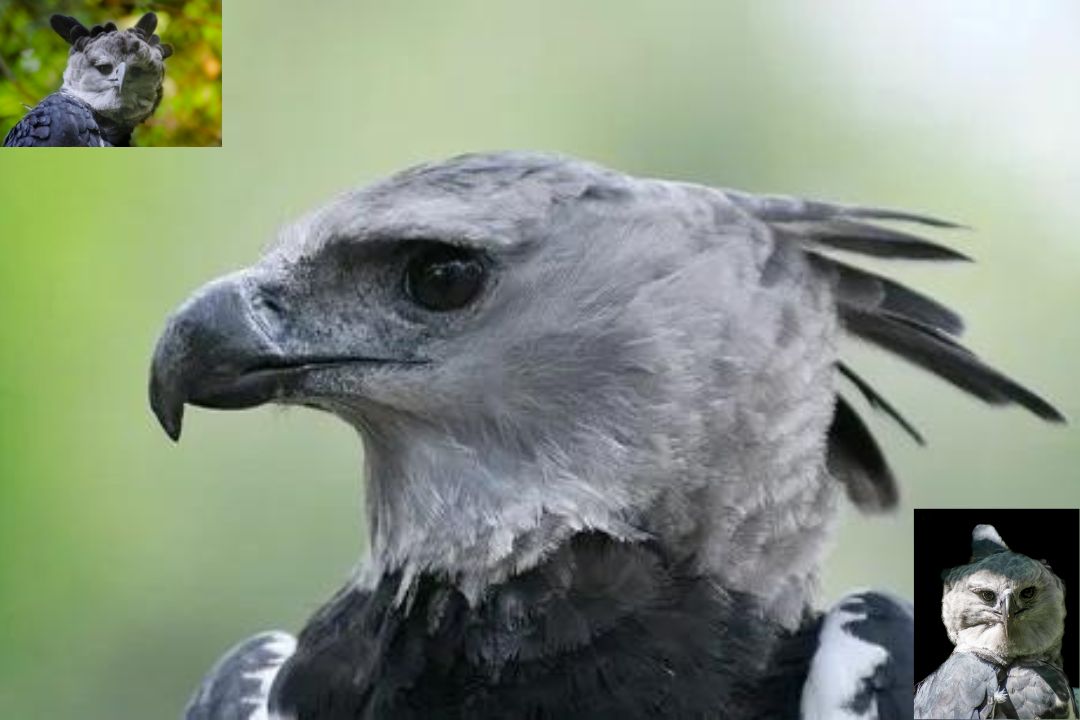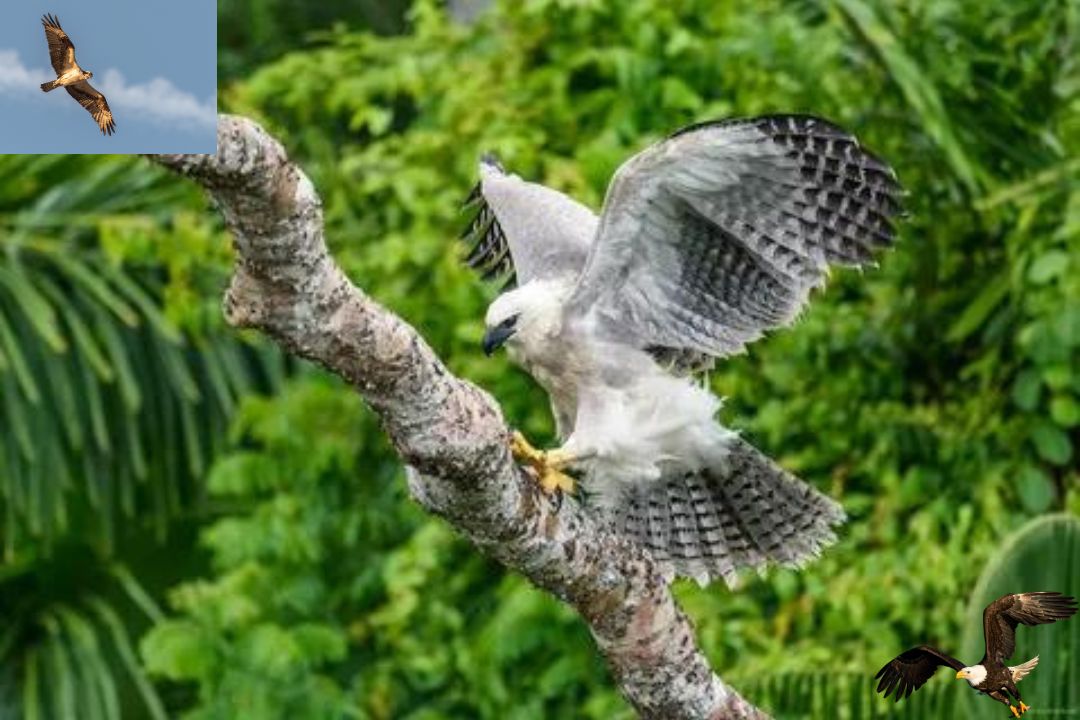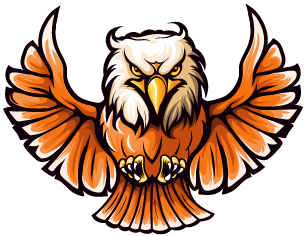The Majestic Harpy Eagle: A Comprehensive Guide
Introduction
The Shrew Bird (Harpia harpyja) is quite possibly of the most remarkable and enrapturing raptor in the avian world. Known for its great size, striking appearance, and impressive hunting abilities, this wonderful flying predator remains as an image of the rich tropical woodlands it calls home. This article dives into different parts of the Nag Falcon, including its actual attributes, territory, diet, conduct, and preservation status. Harpy eagle By investigating these features, we expect to give a careful comprehension of why this bird is viewed as quite possibly of the most sensational animal in the animals of the world collectively.

Physical Characteristics
Size and Appearance
The Shrew Hawk is a genuine goliath among falcons. Grown-up females, the bigger sex, can gauge as much as 10 kilograms (22 pounds) and brag a wingspan of roughly 2.2 meters (7.2 feet). Guys are marginally more modest, gauging between 6.7 to 8.5 kilograms (14.8 to 18.7 pounds) and having a wingspan of around 1.9 meters (6.2 feet).
harpy eagle Its plumage is dominatingly dull dim, standing out pointedly from its white underside. The bird’s most distinctive element is its enormous, padded peak on top of its head, giving it a magnificent and forcing appearance. Its strong claws, which can arrive at up to 13 centimeters (5 inches) long, are a demonstration of its ability as a hunter.
Vision and Adaptations
harpy eagle The Nag Hawk’s sharp vision is basic for spotting prey from high elevations. With binocular vision and the capacity to see in both low light and brilliant circumstances, this hawk succeeds in hunting. Its powerful form, serious areas of strength for including and enormous claws, permits it to catch and repress prey with momentous productivity.
Geographic Range
The Shrew Falcon is principally tracked down in the tropical rainforests of Focal and South America. Its reach stretches out from Mexico through Focal America and down to the Amazon Bowl in Brazil. This hawk flourishes in thick, evergreen backwoods, where it can track down more than adequate cover and settling locales.
Habitat Preferences
harpy eagle Favoring undisturbed timberlands, the Shrew Falcon is less usually found in regions vigorously impacted by human movement. It is commonly connected with marsh rainforests, however it can likewise be found in rugged areas where thick forestation exists. The protection of these natural surroundings is critical for the endurance of this glorious bird.
Prey Selection
harpy eagle eating routine of the Wench Falcon basically comprises of medium-sized vertebrates and birds. Its prey incorporates sloths, monkeys, coatis, and different bird species like toucans and parrots. The bird’s strong claws and snout are adjusted to effectively deal with and kill these creatures.
Hunting Strategy
Utilizing its sharp visual perception and quiet flight, the Wench Falcon chases from a roost, harpy eagle diving downward on clueless prey. Its hunting system includes fast jumps and exact strikes, frequently getting prey with its claws and conveying a lethal blow with its mouth. The falcon’s hunting ability is a blend of covertness, power, and nimbleness.
Breeding and Nesting
harpy eagle Wench Birds are known for serious areas of strength for them bonds, with monogamous connections that can keep going forever. They construct enormous, durable homes in tall trees, frequently utilizing similar home many years. The female regularly lays a couple of eggs, which the two guardians alternate hatching. The chicks are conceived altricial, meaning they are defenseless and depend altogether on their folks for care and sustenance.
Communication
The Wench Hawk imparts through a scope of vocalizations, including whistles and shrieks. These calls are utilized for an area stamping, mating ceremonies, and correspondence between mates. Their vocalizations are a fundamental piece of their social connections and regional way of behaving.
Threats
The Nag Falcon faces a few dangers, principally because of territory misfortune brought about by deforestation and human infringement. harpy eagle Logging and horticultural development have fundamentally diminished the accessible woods living spaces, prompting a decrease in prey accessibility and settling destinations. Moreover, the species is periodically pursued or caught by people, further jeopardizing its populace.
Conservation Efforts
harpy eagle Preservation associations and neighborhood state run administrations are attempting to safeguard the Shrew Hawk by protecting its normal territory and carrying out enemy of poaching measures. Endeavors incorporate laying out safeguarded regions, advancing manageable land-use practices, and bringing issues to light about the hawk’s biological significance. Rearing projects and examination drives likewise assume a critical part in the protection of this species.
Habitat and Range
The wench hawk occupies the thick tropical rainforests of Focal and South America, from southern Mexico to northern Argentina. They favor essential woods and are normally tracked down in swamp regions, however they can likewise dwell in montane woodlands. These hawks are exceptionally delicate to living space unsettling influence, and deforestation represents a huge danger to their endurance.

Behavior and Diet
Wench hawks are single birds, meeting up just for mating. They are known for their strong hunting abilities and are dominant hunters in their current circumstance. Their eating regimen fundamentally comprises of medium-sized warm blooded animals and birds, including monkeys, sloths, and enormous birds like toucans and parrots.harpy eagle The nag hawk’s hunting strategy includes plunging down from a roost to shock and catch prey with their colossal claws.
Their hunting methodology is adjusted to their thick woods living space. Nag falcons depend on their magnificent vision to detect prey from a high vantage point. They are additionally known for their understanding, frequently sitting tight still for extensive stretches prior to striking.
Reproduction and Lifespan
Nag hawks structure long haul monogamous matches and ordinarily assemble enormous homes high in the trees, frequently on top of the tallest trees an in their area. The settling system includes the two guardians, with the female typically laying one to two eggs. Hatching goes on around 56 days, with the two guardians alternating to keep the eggs warm.
When brought forth, the chicks are altricial, it are conceived visually impaired and vulnerable to mean they. They depend totally on their folks for food and insurance. The guardians are exceptionally committed, harpy eagle and the consideration they give guarantees a high pace of endurance for the youthful falcons. Fledging happens around 6 to 10 months in the wake of incubating, and youthful nag falcons stay with their folks for a very long time to master fundamental basic instincts.
In the wild, nag hawks can satisfy 35 years, albeit many face dangers that can diminish their life expectancy.
Conservation Status
The nag hawk is named Close to Undermined by the Global Association for Protection of Nature (IUCN). The essential dangers to their endurance incorporate territory misfortune because of deforestation, hunting, and human infringement. Preservation endeavors are centered around safeguarding their rainforest natural surroundings and bringing issues to light about their biological significance.
Associations and analysts are attempting to alleviate these dangers through territory protection, hostile to poaching measures, and ecological schooling. By guaranteeing that the rainforest stays in salvageable shape, we can assist with saving the nag hawk and the rich biodiversity of its current circumstance.
The Harpy Eagle’s Role in the Ecosystem
As a dominant hunter, the shrew falcon assumes a basic part in keeping up with the wellbeing and equilibrium of its biological system. By controlling the populaces of medium-sized well evolved creatures and birds, the shrew hawk directs species variety and the elements of the timberland climate. This ruthless job guarantees that no single species turns out to be excessively prevailing, which supports a fair and flourishing biological system.
Specifically, shrew falcons go after species that are in many cases thought about bugs or are bountiful, like specific rodents and obtrusive bird species. By holding these populaces in line, nag falcons in a roundabout way support the strength of vegetation and the general biodiversity of their territory. Their presence is a sign of a solid, working rainforest.

Challenges and Conservation Efforts
Habitat Destruction;
The essential danger to the nag falcon is natural surroundings misfortune because of deforestation. The getting free from tropical rainforests for farming, logging, and metropolitan advancement altogether diminishes the region where wench hawks can reside and chase. The deficiency of huge, old trees additionally influences their settling destinations, as they like to fabricate their homes in the tallest trees of the backwoods.
Poaching and Human-Wildlife Conflict:
Albeit not generally so regularly designated as a few different animal types, nag hawks at times succumb to poaching. They might be pursued for their plumes, or they might be killed by ranchers and landowners who view them as a danger to their animals or poultry.
Protected Areas:
Laying out and implementing safeguarded regions where deforestation is confined can assist with defending basic territories. Protection associations work to make and grow saves that give places of refuge to shrew birds to reside and recreate.
Looking Forward
The future of the harpy eagle depends on continued conservation efforts and the protection of its rainforest habitat. By supporting initiatives aimed at preserving tropical forests and mitigating human-wildlife conflicts, we can help ensure that future generations will have the opportunity to witness the majesty of this remarkable bird of prey.
Efforts to conserve the harpy eagle not only benefit this iconic species but also contribute to the broader goal of preserving the rich biodiversity of our planet’s tropical rainforests. As we move forward, the harpy eagle stands as a powerful reminder of the interconnectedness of all living things and the importance of safeguarding the natural world.
The Harpy Eagle in Captivity
While shrew falcons are dominatingly found in the wild, some are housed in bondage in zoos and natural life recovery revolves all over the planet. Hostage rearing projects assume a significant part in the preservation of this species, particularly in districts where their regular territories are seriously undermined.
Captive Breeding and Education
Hostage rearing projects expect to guarantee the endurance of wench falcons and to teach people in general about their preservation needs. These projects frequently include fastidious endeavors to copy the birds’ normal living space as intently as conceivable to empower fruitful rearing. By bringing issues to light through instructive shows and intelligent showcases, zoos assist with cultivating a more noteworthy appreciation for the species and produce support for protection drives.
Challenges in Captivity
While imprisonment can offer security and backing for rearing, it likewise presents difficulties. Guaranteeing the physical and mental prosperity of wench falcons in bondage requires cautious thoughtfulness regarding their eating regimen, natural surroundings enhancement, and social necessities. Hostage falcons should be given open doors for practice and mental feeling to recreate their normal ways of behaving as intently as could really be expected.

Release and Reintroduction
At times, shrew falcons reared in bondage are once again introduced into their regular living spaces as a feature of preservation endeavors. This interaction includes broad preparation and readiness to guarantee the birds can adjust to the wild and endure freely. Renewed introduction programs frequently incorporate observing and backing to follow the advancement of delivered falcons and survey their mix into the wild populace.
The Future of Harpy Eagles
The eventual fate of nag birds relies upon a blend of viable preservation measures, natural surroundings insurance, and progressing research. By tending to the dangers they face and supporting protection drives, we can pursue a future where shrew hawks keep on taking off through the tropical rainforests of Focal and South America.
Global Collaboration
Conservation efforts for the harpy eagle benefit from global collaboration. International partnerships between governments, non-governmental organizations, and local communities are essential for addressing the complex challenges of habitat loss and poaching. Sharing knowledge and resources helps to enhance the effectiveness of conservation strategies and fosters a unified approach to protecting the harpy eagle and its habitat.
Engaging Local Communities
Including neighborhood networks in preservation endeavors is essential for the drawn out progress of nag hawk security. Teaching neighborhood occupants about the significance of safeguarding rainforests and the job of wench hawks in the biological system helps fabricate a feeling of stewardship and supports feasible practices. Local area based protection programs frequently incorporate drives, for example, eco-the travel industry, which gives monetary advantages while advancing natural surroundings preservation.
Innovative Research
Propels in innovation and examination strategies keep on upgrading how we might interpret shrew falcons and their requirements. Advancements like satellite following, far off cameras, and hereditary examinations give important bits of knowledge into their way of behaving, development examples, and populace elements. This information is basic for creating successful preservation techniques and tending to arising dangers.
The Harpy Eagle’s Symbolic Significance
The harpy eagle is not only a remarkable bird of prey but also a symbol of the intricate beauty and balance of nature. Its majestic presence and commanding size have inspired awe and reverence across cultures and throughout history. In indigenous cultures of Central and South America, the harpy eagle often holds a place of honor and significance. Its formidable hunting skills and striking appearance make it a powerful symbol of strength, courage, and authority. This deep cultural connection underscores the broader message of the harpy eagle’s importance as a guardian of its forest home.
The Role of Citizen Science
Citizen science is becoming an increasingly important tool in the conservation of the harpy eagle. Enthusiasts and volunteers contribute valuable data on eagle sightings, nesting sites, and behaviors. These contributions help researchers track the population dynamics and health of harpy eagles across their range. By engaging the public in conservation efforts, we not only gather critical information but also raise awareness and foster a sense of personal connection to the species. Citizen science initiatives empower individuals to take an active role in preserving the harpy eagle and its habitat.
Economic Impact of Conservation
Protecting the harpy eagle and its rainforest habitat also has significant economic implications. Healthy rainforests contribute to the local economy through eco-tourism, which provides sustainable livelihoods for communities while promoting conservation. By preserving these habitats, we also maintain the ecological services they provide, such as regulating climate, supporting water cycles, and sustaining biodiversity. The harpy eagle’s presence in eco-tourism can attract visitors and generate revenue, which further supports local economies and conservation efforts.
Encouraging Global Awareness
Global awareness campaigns play a crucial role in garnering support for the harpy eagle’s conservation. Through documentaries, social media, and international collaborations, we can share the story of the harpy eagle with a wider audience. Highlighting the beauty and importance of this species helps to inspire action and encourage more people to contribute to conservation efforts. As awareness grows, so does the collective commitment to protecting not only the harpy eagle but also the broader ecosystems that support a wealth of wildlife.
Conclusion
The wench bird, with its noteworthy size, strong hunting skills, and striking appearance, is a genuine token of nature. Its job as a dominant hunter and its status as a cornerstone animal types in its rainforest environment highlight the significance of safeguarding these fundamental biological systems.
Through committed protection endeavors, government funded training, and worldwide cooperation, we can assist with guaranteeing that the nag hawk keeps on flourishing in nature. By safeguarding their living spaces and supporting drives that address the difficulties they face, we add to the more extensive objective of keeping up with biodiversity and defending the normal world for people in the future.
As we plan ahead, let us be propelled by the nag falcon’s solidarity and versatility. By cooperating to address the dangers they face, we can assist with guaranteeing that this radiant bird stays an image of the untamed excellence and imperativeness of our planet’s rainforests.


